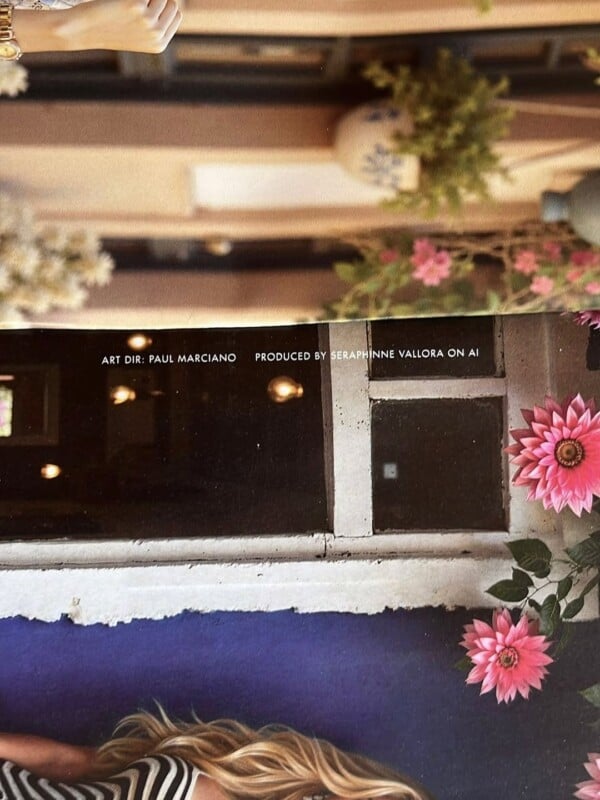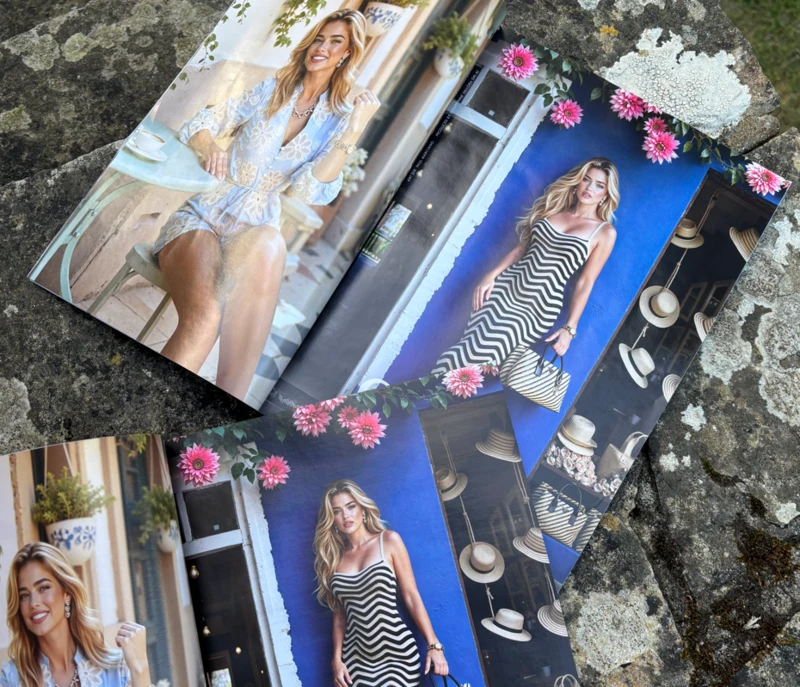AI-Generated Models Now Appear in ‘Vogue’ Magazine

It is the dystopian nightmare many photographers feared: AI-generated images of models are appearing in the pages of illustrious magazines like Vogue.
The ads inside Vogue are famous, but in August’s print edition, one from Guess features a flawless blonde model in a striped maxi dress on one page and a floral playsuit from the brand’s summer collection on another.
But eagle-eyed readers noticed something was up, which was confirmed by small and subtle text in the corner of the ad, which notes it is AI-generated. Vogue says that it was not an editorial decision to include an AI model but confirms that it is the first time an AI-generated person has appeared in the magazine.

Unsurprisingly, the move has caused controversy and anger. Seraphinne Vallora, a marketing agency, is behind the ad, which says that Guess co-founder Paul Marciano approached them with the idea.
“There’s been a lot of talk. A lot of misconceptions. And we get it, this industry didn’t exist before,” writes Seraphinne Vallora in defense of its work on Instagram. “This is real work, and it deserves to be recognized as such! It involves complex workflows we built ourselves.”

The two founders of Seraphinne Vallora, Andreea Petrescu and Valentina Gonzalez, insist that the company still hires photographers as part of the workflow.
“We understand people may think AI will be replacing jobs, but in reality, it’s just like any other tool in the design industry and it CREATES jobs, because these images are AI-Driven but made by HUMANS, CREATIVES, AND DESIGNERS.”

But as commenters demanded proof that Seraphinne Vallora did use a real photographer and other creatives, the company failed to answer those questions on social media. PetaPixel has also requested more information about the process.
The BBC notes that despite the company’s insistence that it uses human creatives, on its website it lists the benefits of working with them as “eliminating the need for expensive set-ups, MUA artists, venue rentals, stage setting, photographers, travel expenses, hiring models”.
Guess’s Instagram page has also been inundated with negative comments from people livid about the AI models. Tellingly, the brand has not posted the AI-generated images on the social media platform.
There are also concerns over unrealistic body standards for women — a problem that has plagued the industry for years.
“Beauty standards are already being influenced by AI. There are young girls getting plastic surgery to look like a face in a filter – and now we see people who are entirely artificial,” Sinead Bovell, a former model, tells the BBC.
Guess is not the only fashion brand currently using AI models. H&M has started rolling out what it calls “digital twins”, effectively AI-generated clones of models.